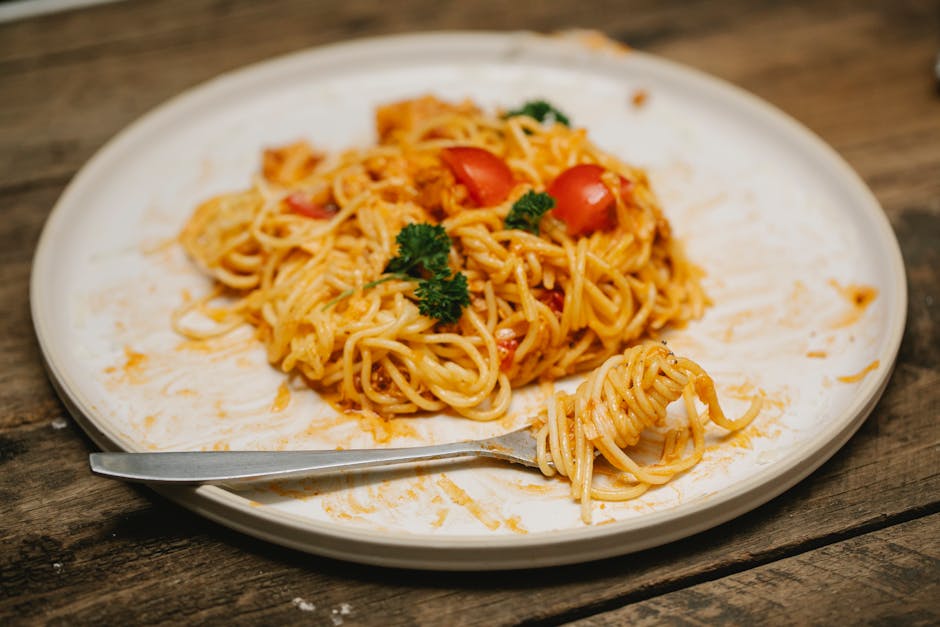The Caesar salad, a seemingly simple dish of romaine lettuce, croutons, Parmesan cheese, and a creamy dressing, boasts a surprisingly rich and fascinating history. Contrary to popular belief, it wasn’t created in ancient Rome, but rather in Tijuana, Mexico, in 1924. Its inventor, Italian-American chef Caesar Cardini, claimed to have concocted the salad spontaneously during a Fourth of July rush at his restaurant, using whatever ingredients he had on hand. This impromptu creation quickly gained popularity, becoming a staple in American cuisine. While the exact recipe remains debated, the core elements—crisp romaine, pungent Parmesan, and a distinctive dressing—have remained consistent.
The salad’s popularity exploded after World War II, with estimates suggesting that over 50 million Caesar salads are consumed annually in the United States alone. This widespread adoption solidified its place in American culinary culture, transforming it from a relatively obscure Mexican-American dish into a global phenomenon. Its simplicity and adaptability contributed significantly to its success; countless variations have emerged, incorporating elements like grilled chicken, shrimp, or even different types of cheese. This versatility speaks to the inherent appeal of the basic recipe, a testament to Cardini’s original ingenuity.
Beyond its culinary significance, the Caesar salad holds a unique cultural position. It represents a fascinating blend of Italian and Mexican influences, reflecting the diverse culinary landscape of the United States. The salad’s enduring appeal lies in its balance of textures and flavors—the crisp lettuce, the crunchy croutons, the salty Parmesan, and the creamy, slightly tangy dressing. It’s a dish that transcends simple ingredients, becoming a symbol of both casual dining and upscale restaurants. Its presence on menus worldwide underscores its lasting impact and its ability to adapt to various cultural contexts. Even today, debates continue about the authentic recipe, further highlighting the salad’s lasting cultural impact and its enduring mystery.
Ingredients and Measurements
Crafting the perfect Caesar salad hinges on using fresh, high-quality ingredients and precise measurements. Don’t skimp on the details; they make all the difference!
For the salad itself, you’ll need a generous 8 ounces (225g) of crisp romaine lettuce. Choose hearts of romaine for the best texture and minimize any tough outer leaves. Wash the lettuce thoroughly and pat it completely dry; excess moisture will dilute your dressing.
Next, prepare your croutons. Start with 4 slices of a good quality, crusty bread, such as a baguette or sourdough. Cut the bread into 1-inch cubes. For consistent toasting, use a similar size for all the cubes. Tossing the croutons in 1 tablespoon of olive oil before toasting ensures even browning and crispiness. Bake at 375°F (190°C) for approximately 8-10 minutes, or until golden brown and crunchy. Keep a close eye to avoid burning.
For the classic Caesar dressing, you’ll need 2 large egg yolks, ensuring they are at room temperature for optimal emulsification. Room temperature yolks combine more smoothly with the oil, resulting in a creamier, less likely to separate dressing. You’ll also need 1/4 cup (60ml) of freshly squeezed lemon juice – bottled juice lacks the vibrant acidity of fresh. Using freshly squeezed lemon juice is crucial for the bright, tangy flavor of the dressing.
The dressing also requires 1 teaspoon of Dijon mustard, which acts as an emulsifier, helping bind the oil and egg yolks. Don’t skip the Dijon; it adds a lovely depth of flavor. Next, you’ll need 1 clove of garlic, minced finely. Too much garlic can overpower the other flavors, so start small and adjust to your taste. Gradually whisk in 1 cup (240ml) of high-quality extra virgin olive oil in a thin stream while constantly whisking to create a smooth emulsion. Whisking slowly and steadily is essential for a creamy dressing. Finish with 1/2 teaspoon of freshly ground black pepper and 1/4 teaspoon of salt, adjusting to taste.
Finally, add 1/2 cup (25g) of grated Parmesan cheese to the salad. Use freshly grated Parmesan for the best flavor and texture. Pre-grated cheese often contains cellulose, which can affect the taste and consistency.
Preparing the Dressing
The Caesar dressing is the heart and soul of this classic salad, so take your time and get it right! This recipe focuses on a creamy, emulsified dressing, rather than a vinaigrette. The key is to slowly incorporate the oil into the other ingredients to create a smooth, stable emulsion that won’t separate.
Begin with 1/4 cup mayonnaise. Use a good quality mayonnaise – the flavor will significantly impact the final taste of your dressing. Place the mayonnaise in a medium-sized bowl. Next, add 2 tablespoons of freshly squeezed lemon juice. Freshly squeezed juice offers a brighter, more vibrant flavor than bottled juice. Don’t be tempted to substitute with vinegar; the acidity of lemon juice is crucial for balancing the richness of the mayonnaise.
Now, for the garlic. We’ll use two cloves of garlic, minced finely. Too much garlic can overpower the other flavors, so be mindful of the quantity. If you prefer a milder garlic flavor, you can use just one clove. Add the minced garlic to the bowl with the mayonnaise and lemon juice. Next, add 1 teaspoon of Dijon mustard. Dijon mustard adds a subtle sharpness and helps to emulsify the dressing. A touch of Worcestershire sauce (1/2 teaspoon) provides depth and umami.
Finally, we incorporate the olive oil. Use 1/2 cup of extra virgin olive oil. Gradually whisk in the olive oil, a tablespoon at a time, while continuously whisking the mixture. This slow addition is essential for creating a stable emulsion. If you add the oil too quickly, the dressing will likely separate. Keep whisking until the dressing is smooth, creamy, and well-combined. Taste the dressing and adjust the seasonings as needed. You might want to add a pinch of salt (about 1/4 teaspoon) and freshly ground black pepper (to taste).
For a richer, more decadent dressing, consider adding 1-2 tablespoons of grated Parmesan cheese to the mixture at the end. This will further enhance the flavor and creaminess. Once you’ve achieved your desired consistency and taste, set the dressing aside until you’re ready to toss with your salad. Remember to taste and adjust seasonings as needed throughout the process. A perfectly balanced Caesar dressing is the key to a perfect Caesar salad.
Washing and Drying Lettuce
Crisp, clean lettuce is paramount to a delicious Caesar salad. Proper washing and drying techniques are crucial to prevent a soggy salad and ensure a delightful crunch. We’ll be using approximately 1 large head of romaine lettuce (or about 8 ounces of pre-washed and chopped romaine), but you can adjust this quantity based on your needs.
First, remove any outer, damaged leaves from the lettuce head. Discard these; they’re often less appealing and may harbor more dirt and debris. Then, cut the romaine lettuce into bite-sized pieces. This helps ensure thorough washing and even drying.
Now, it’s time to wash the lettuce. Avoid simply rinsing the lettuce under a tap. This method often does not remove all traces of pesticides, dirt, and other contaminants. Instead, we recommend a more thorough approach. Fill a large bowl (at least 5 quarts capacity) with cold water. Add about 1 tablespoon of white vinegar to the water. The vinegar helps to lift away any lingering dirt and bacteria from the leaves. Submerge the lettuce completely and gently swish it around for about 30 seconds.
Next, carefully lift the lettuce out of the water and place it into a colander. Discard the dirty wash water. Then, rinse the lettuce once more under cold running water to remove any remaining vinegar and loose debris. Ensure that the water runs freely through the colander.
Finally, and this is crucial, thoroughly dry your lettuce. Excess moisture will make your salad soggy and unappealing. The best method is to use a salad spinner. Place the washed lettuce into the spinner and spin it for at least 2 minutes, or until the leaves are completely dry. If you don’t have a salad spinner, you can gently pat the leaves dry with clean paper towels, but this method is less efficient and can sometimes tear delicate leaves.
Properly washed and dried lettuce is essential for a great Caesar salad. Taking the time to perform these steps will ensure a flavorful and enjoyable salad that will impress your guests. Remember to always handle your lettuce gently to prevent bruising and maintain its freshness.
Croutons Preparation (Optional)
While not strictly necessary, homemade croutons elevate a simple Caesar salad to the next level. Store-bought croutons often lack the crispness and flavor of freshly made ones. This section details how to create delicious croutons to perfectly complement your salad.
Choosing your bread: Stale bread is ideal for croutons. Day-old bread absorbs less oil and results in crispier croutons. A good baguette, sourdough, or even a crusty Italian loaf works wonderfully. Avoid overly soft breads like brioche, as they may become soggy. You’ll need approximately 4 slices of bread, about ½ inch thick.
Cubing the bread: Cut the bread into roughly ½-inch cubes. Consistency in size ensures even cooking. Aim for cubes that are relatively uniform to guarantee even browning and crispness. Avoid making them too small; smaller cubes will burn easily.
Seasoning the bread: In a medium bowl, toss the bread cubes with 2 tablespoons of olive oil. This helps them crisp up beautifully. Season generously with salt and freshly ground black pepper. For extra flavor, consider adding ½ teaspoon of garlic powder, ½ teaspoon of onion powder, and a pinch of dried oregano or Italian seasoning. Don’t be shy with the seasoning; the croutons need to hold their own against the robust flavors of the Caesar dressing.
Baking the croutons: Preheat your oven to 350°F (175°C). Spread the seasoned bread cubes in a single layer on a baking sheet. Ensure they are not overcrowded; overcrowding will lead to steaming rather than crisping. Bake for 10-15 minutes, or until golden brown and crispy, tossing halfway through for even cooking. Keep a close eye on them during the last few minutes to prevent burning. If you prefer a deeper color and more intense flavor, broil them for the last minute or two, but watch carefully to avoid burning.
Cooling and storing: Once cooked, remove the croutons from the oven and let them cool completely on a wire rack. This allows excess oil to drain and helps maintain their crispness. Store leftover croutons in an airtight container at room temperature for up to 3 days. Avoid storing them in a sealed container while still warm; this will trap moisture and make them soggy.
Optional additions: For a gourmet touch, consider adding a sprinkle of Parmesan cheese to the bread cubes before baking. Alternatively, you could toss them with some fresh herbs like rosemary or thyme for an aromatic twist. Experiment with different flavors to discover your perfect crouton combination.
Assembling the Salad
With your dressing prepared and your components ready, assembling the Caesar salad is a swift and satisfying process. Begin by ensuring your romaine lettuce is thoroughly dried. Excess moisture will dilute the dressing and result in a soggy salad, a culinary crime against Caesar! Use a salad spinner for optimal dryness, or gently pat the leaves with paper towels.
For a salad serving two, tear or cut approximately 6 cups of romaine lettuce into bite-sized pieces. Avoid overly large pieces, as they can be difficult to manage and may not be fully coated in dressing. Smaller, more manageable pieces ensure every mouthful is flavorful.
Next, add your croutons. For this recipe, we recommend approximately 1/2 cup of homemade or store-bought croutons. Avoid adding croutons before the lettuce; this will cause them to become soggy and lose their delightful crunch. A good rule of thumb is to add the croutons just before serving.
Now, it’s time for the star of the show – the Caesar dressing. Start by adding 1/4 cup of the dressing to the lettuce. Don’t add all the dressing at once! This is where many Caesar salad mishaps occur. Gently toss the lettuce and dressing together using tongs or your hands (if you prefer and have clean hands). The goal is to evenly coat each leaf without over-dressing, which can again lead to a soggy salad.
Taste the salad at this point. If it needs more dressing, add it a tablespoon at a time, tossing gently after each addition, until you achieve your desired level of dressing. Remember, it’s easier to add more dressing than to take it away. Over-dressing is a common mistake, so err on the side of caution.
Finally, add the Parmesan cheese. For two servings, use about 1/4 cup of freshly grated Parmesan cheese. Sprinkle it evenly over the salad. Avoid pre-grated Parmesan, as it often contains cellulose which can impact the texture and flavor. Freshly grated Parmesan provides a superior taste and melt-in-your-mouth experience.
Serve immediately to enjoy the perfect balance of crisp lettuce, crunchy croutons, creamy dressing, and sharp Parmesan. A final optional touch is to garnish with a few extra Parmesan shavings and a grind of fresh black pepper.
Serving Suggestions
Your perfectly made Simple Caesar Salad is ready to be enjoyed! To elevate the experience and ensure optimal flavor and presentation, consider these serving suggestions.
Classic Presentation: For a traditional look, serve the salad directly in a large, shallow bowl. Arrange the romaine lettuce leaves attractively, distributing the croutons evenly across the surface. Drizzle the Caesar dressing generously over the salad, ensuring all the leaves are lightly coated. Finally, garnish with freshly grated Parmesan cheese (approximately 1/4 cup for a 4-serving salad) and a few extra crisp romaine leaves for an elegant touch.
Individual Portions: For a more formal setting or for individual servings, consider using smaller bowls or salad plates. Divide the salad evenly among the plates, ensuring each portion contains a similar amount of lettuce, croutons, and dressing. For a restaurant-style presentation, use a small spoon to create a swirl of dressing in the center of each plate, then arrange the lettuce and croutons around it. Top with a sprinkle of Parmesan cheese (approximately 1 tablespoon per serving).
Adding Protein: To make your Caesar Salad a more substantial meal, consider adding grilled chicken breast (approximately 4-6 ounces per serving), shrimp (about 3-4 ounces per serving), or even crispy bacon (2-3 slices per serving). Add the protein after dressing the salad to prevent it from becoming soggy. Ensure the protein is cut into bite-sized pieces for easy eating.
Dietary Considerations: For a vegetarian option, omit the protein and consider adding roasted vegetables like bell peppers or asparagus for extra flavor and texture. For gluten-free diners, be sure to use gluten-free croutons. Many commercial brands are readily available, or you can easily make your own using gluten-free bread. Always clearly communicate the ingredients to your guests, especially if catering to dietary restrictions.
Temperature Matters: Serve your Caesar Salad immediately after preparing it for the best flavor and texture. Avoid making the salad too far in advance, as the lettuce may wilt and the croutons may become soggy. If preparing ahead, store the dressing separately and toss the salad just before serving.
Garnish Ideas: Beyond Parmesan cheese, consider adding other garnishes to enhance the visual appeal and flavor of your Caesar Salad. A few black peppercorns, a sprinkle of paprika, or even some finely chopped fresh herbs like parsley or chives can add a sophisticated touch. Experiment with different garnishes to find your personal favorite.
Recommendations
For the best Caesar salad experience, we highly recommend using fresh, high-quality ingredients. The crispness of the romaine lettuce and the richness of the Parmesan cheese are crucial to the overall flavor profile. Don’t be afraid to experiment with the amount of dressing to your liking; some prefer a lighter dressing, while others enjoy a more generous pour. Properly chilling the dressing before serving will enhance its creamy texture and prevent it from becoming too runny.
Serving suggestions are plentiful! Consider adding grilled chicken, shrimp, or salmon for a heartier meal. Croutons can be made from various breads, offering textural variety. A sprinkle of freshly cracked black pepper adds a nice kick. For a vegetarian option, consider adding roasted vegetables like bell peppers or asparagus. The possibilities are endless!
Storage is key to maintaining the freshness of your Caesar salad. Store leftover salad separately from the dressing. Place the lettuce in an airtight container lined with paper towels to absorb excess moisture. Store the dressing in a separate airtight container in the refrigerator. Combine just before serving to prevent the lettuce from becoming soggy. The salad is best enjoyed fresh, but can be stored for up to 2 days in the refrigerator.
This simple Caesar salad recipe is a perfect accompaniment to many dishes. It pairs wonderfully with grilled meats, especially chicken or steak. It also makes a fantastic side dish for pasta dishes or pizzas. Consider serving it alongside a hearty soup for a balanced meal. Avoid pairing it with dishes that have strong, overpowering flavors that may mask the delicate taste of the salad.
Nutritional Information (per serving, approximate): Calorie count will vary depending on the ingredients and portion size, but a typical serving might contain around 300-400 calories. It is a good source of vitamins A and K from the romaine lettuce and calcium and protein from the Parmesan cheese. However, the dressing can significantly impact the fat and sodium content. Be mindful of portion sizes and consider using a lighter dressing to reduce calories and fat.





